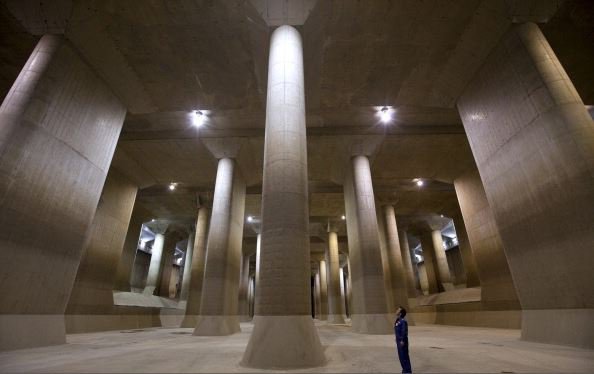Recent flooding tragedy in the country has led us to question what technology have we been using to mitigate the risk given that every year Malaysia have a flooding problem. We know Kuala Lumpur has its Smart Tunnel system, but that alone is not enough apparently. So, as we wait for the smart people in the government figure out how prevent flooding tragedies from happening again (and where to get the budget and funding from) let us ponder across the globe on what other countries have been doing to mitigate their risk of city flooding.
The rapid response water-gate in the US
When flooding is imminent, you often need a barrier to protect yourself. Sandbags serve this task in many scenarios, but they may require a significant amount of preparation and set-up time, plus it’s cumbersome to carry around. A device known as the water-gate can be a useful alternative. This is a rapidly deployable device made of a PVC material. It utilizes the pressure of oncoming water to stabilize itself. This essentially means that the floodwaters are used to build their own dam.
By surrounding a structure with the water-gate, a makeshift dam is created around the building. It’s also completely reusable, so it’s a great option for those living in a region at risk of flooding.
The Maeslant Storm Surge Barrier in the Netherlands
Netherlands’ Deltaworks system is one of the most comprehensive flood protection systems in the entire world. This complex network of flood barrier infrastructure comes as a result of the country sitting almost entirely below sea level.
One notable barrier that stands as part of the Deltaworks is the Maeslantkering, otherwise known as the Maeslant Storm Surge Barrier. This Barrier was finished in 1997 and today it is still one of the largest moving structures in the entire world.
As water rises in the surrounding area, sensors trigger the walls to close and water tanks to fill along the barrier. This water weight causes the walls to push firmly down on their foundation, keeping floodwaters from breaching the gates.
The Thames Barrier in the UK
Flooding along the Thames River in England has been a persistent problem throughout its history. To combat this, engineers have designed a movable barrier system that is made of hollow steel. These structures form water gates that in times of high flooding can be revolved shut to stop water from flowing through. This design allows ships and other water traffic to pass through with ease during normal times, but authorities can still form it into a barrier quickly when a flood is looming.
These structures have been in place since construction was completed on them in 1984 and have since been used over 100 times to protect the surrounding area from destruction.
LiDAR flood risk mapping in Thailand
In Bangkok, Thailand, LiDAR mapping is being utilized to develop elevation plots and models to understand where resources need to be focused for flood prevention. LiDAR, or light-detection and ranging allows the creation of a 3D elevation map, allowing engineers to develop highly accurate elevation models for a given area of the city.
The city is also using unmanned aerial vehicles to scan the city’s drainage network for obstacles that could prevent water flow; say a tree stuck in a drain or trash buildup in a pipe outlet.
Thailand as a whole has been hard hit by flooding over the last decade, which is what has caused them to adopt such a slew of technology in the prevention and planning for flooding.
The Temple – Tokyo’s Massive Flood Protection Tunnel in Japan
Five giant cisterns, 500-ton columns, and more than 6.5 kilometers of cavernous tunnels all lie below the world’s largest metropolis. Tokyo, one of the densest cities on the planet, is home to one of the most ambitious and enormous flood-control systems ever created. And it is almost entirely invisible to Tokyo residents.
Two massive construction projects protect Japan’s capital from the ever-present threat of floods. The first project, known as the Metropolitan Area Outer Underground Discharge Tunnel, or more simply as the “G-Cans Project,” was completed in 2009. A network of 3.3 kilometer tunnels, called “The Furukawa Reservoir,” will be in place later this year.
Tokyo’s full flood control system is an engineering marvel and a global trailblazer in dealing with water in rapidly expanding urban areas. It is a leadership position the east Asian nation earned through hard experience.
These are some of the technologies used to prevent flooding around the world. But even with these technologies installed, the countries still have flooding problems albeit not as horrible as before it was implemented. It seems like every solution begets another solution, and that solution needs another solution, and so on and so on. The reason is simply because every time a new technology is discovered to prevent city flood, the city expands for development. And that requires a new solution. It’s a never ending cycle, but that is how technology evolve.
As the powers that be figures out how to evolve with the changes, trust that technology will have a solution. It might take a few years and it might take a lot of funding, but smart people in tech will find a way.

